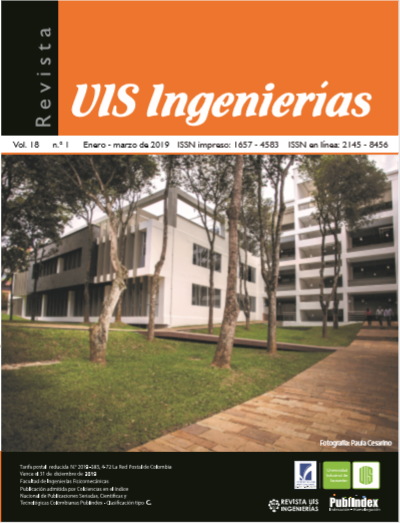Correlation between mass loss on the cavitation erosion and the fatigue stress level for a martensitic stainless steel
Published 2019-01-01
Keywords
- cavitation erosion,
- cumulative damage,
- fatigue,
- stainless steel,
- water turbine
How to Cite
Abstract
The effect of fatigue on the cavitation erosion was examined for a martensitic stainless steel used in the manufacture of the blades for the bulb turbines of the “Iron Gates II” Power Plant turbines. For the cavitation tests, two kinds of specimens were manufactured: from the original material (which was not subjected to fatigue) and samples of materials that were subjected to fatigue cycles with different amplitudes (from 170 to 255 MPa). It was observed that fatigue increases the tendency of cavitation erosion and thus, seems like a cumulative damage. The analysis of the cavitation erosion was done considering simultaneously the mass loss of the time dependence, the surface roughness and the modifications to the microstructure of the specimens. For the material previously subjected to fatigue cycles, the final mass loss (after 150 minutes of cavitation exposure) increases approximately by 30% and the depth of penetration by 25%. In the microstructural analyses, numerous cracks at grain boundaries were observed. Finally, a mathematical model for the dependence of mass losses with the applied stress was developed.
Downloads
References
S. M. Ahmed, K. Hokkirigawa, Y. Ito, y R. Oba, “Scanning electron microscopy observation on the incubation period of vibratory cavitation erosion”, Wear, vol. 142, núm. 2, pp. 303–314, mar. 1991. doi: 10.1016/0043-1648(91)90171-P
S.M. Ahmed, K. Hokkirigawa, K. Kikuchi, Y. Matsudaira, R. Oshima, R. Oba, “Marked surface-roughness effects on the development of microfracture during the incubation period of vibratory cavitation erosion,” in Proc. 3rd Japan–China Joint Conference, Osaka, Japan, 1990, I, pp. 331.
S.M. Ahmed, K. Hokkirigawa, R. Oba and K. Kikuchi, “SEM Observation of the Vibratory Cavitation-Fracture Mode during the Incubation Period and the Small Roughness Effect,” JSME international journal. Ser. 2, Fluids engineering, heat transfer, power, combustion, thermophysical properties, vol. 34, núm. 3, pp. 298-303, 1991. doi: 10.1299/jsmeb1988.34.3_298
T. Okada y Y. Iwai, “Cavitation Erosion”, JSME Int. journal. Ser. 1, Solid Mech. strength Mater., vol. 33, núm. 2, pp. 128–135, 1990. doi: 10.1299/jsmea1988.33.2_128
W. Będkowski, G. Gasiak, C. Lachowicz, A. Lichtarowicz, T. Łagoda, y E. Macha, “Relations between cavitation erosion resistance of materials and their fatigue strength under random loading,” Wear, vol. 230, núm. 2, pp. 201–209, 1999. doi: 10.1016/S0043-1648(99)00105-2
K. S. Min, K. J. Kim, y S. W. Nam, “Investigation of the effect of the types and densities of grain boundary carbides on grain boundary cavitation resistance of AISI 321 stainless steel under creep–fatigue interaction,” J. Alloys Compd., vol. 370, núm. 1, pp. 223–229, 2004. doi: 10.1016/j.jallcom.2003.09.129
H. U. Hong, B. S. Rho, y S. W. Nam, “A study on the crack initiation and growth from δ-ferrite/γ phase interface under continuous fatigue and creep-fatigue conditions in type 304L stainless steels,” Int. J. Fatigue, vol. 24, núm. 10, pp. 1063–1070, 2002. doi: 10.1016/S0142-1123(02)00019-1
A. Karimi y F. Avellan, “Comparison of erosion mechanisms in different types of cavitation,” Wear, vol. 113, núm. 3, pp. 305–322, 1986. doi: 10.1016/0043-1648(86)90031-1
C. Kanchanomai, Y. Miyashita, y Y. Mutoh, “Strain-rate effects on low cycle fatigue mechanism of eutectic Sn–Pb solder,” Int. J. Fatigue, vol. 24, núm. 9, pp. 987–993, 2002. doi: 10.1016/S0142-1123(02)00011-7
S. M. Ahmed, K. Hokkirigawa, Y. Ito, y R. Oba, “Scanning electron microscopy observation on the incubation period of vibratory cavitation erosion”, Wear, vol. 142, núm. 2, pp. 303–314, 1991. doi: 10.1016/0043-1648(91)90171-P
Standard Test Method for Cavitation Erosion Using Vibratory Apparatus, ASTM G32-03, 2018.
G. Mesmacque, M. Voda, I. Bordeasu y T. Abderrahim, “Relations statistiques d’estimation des caractéristiques de l’érosion de cavitation pour les aciers alliés,” Matériaux Tech., vol. 89, núm. 9, 2001. doi: 10.1051/mattech/200189090011

